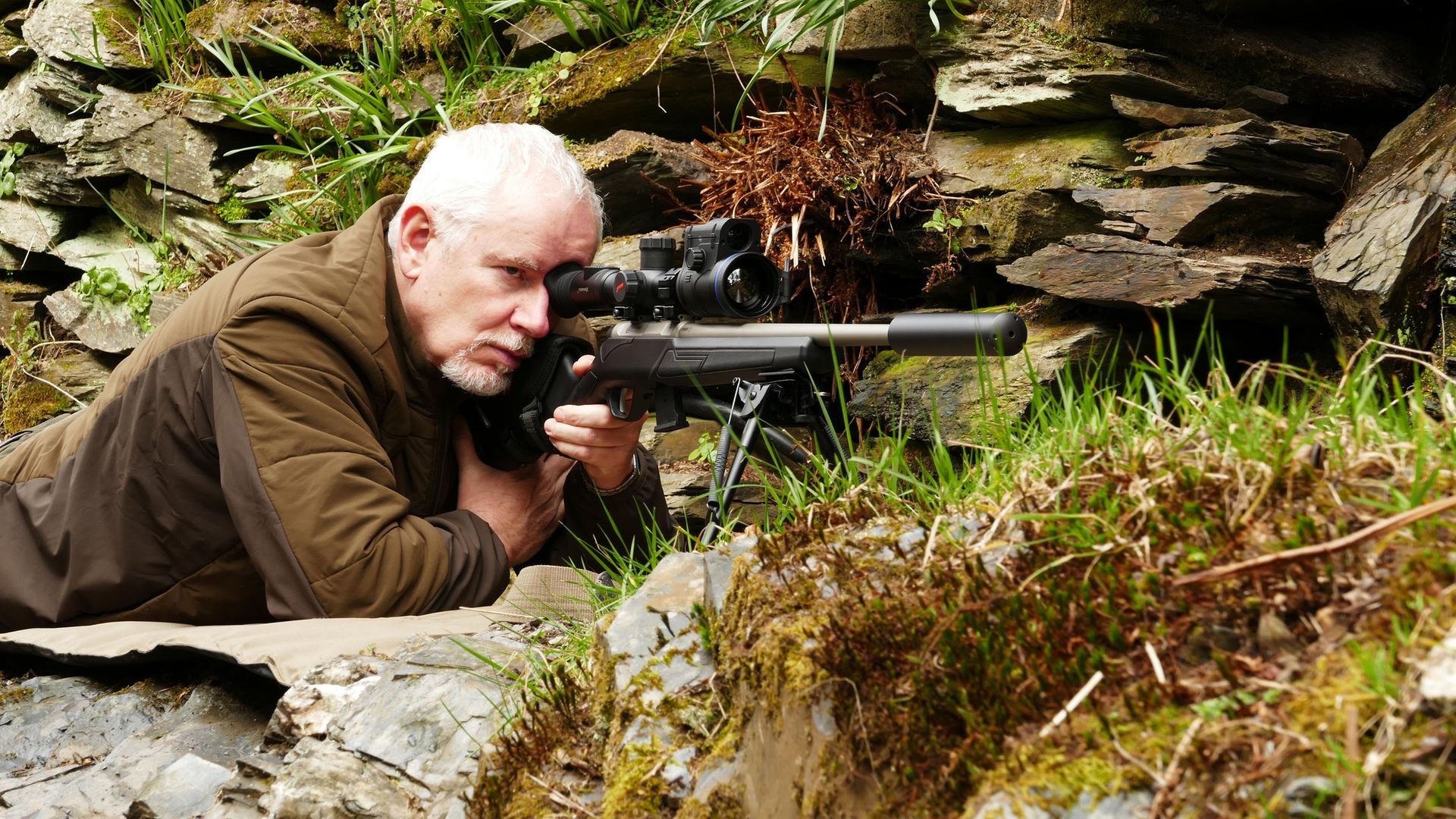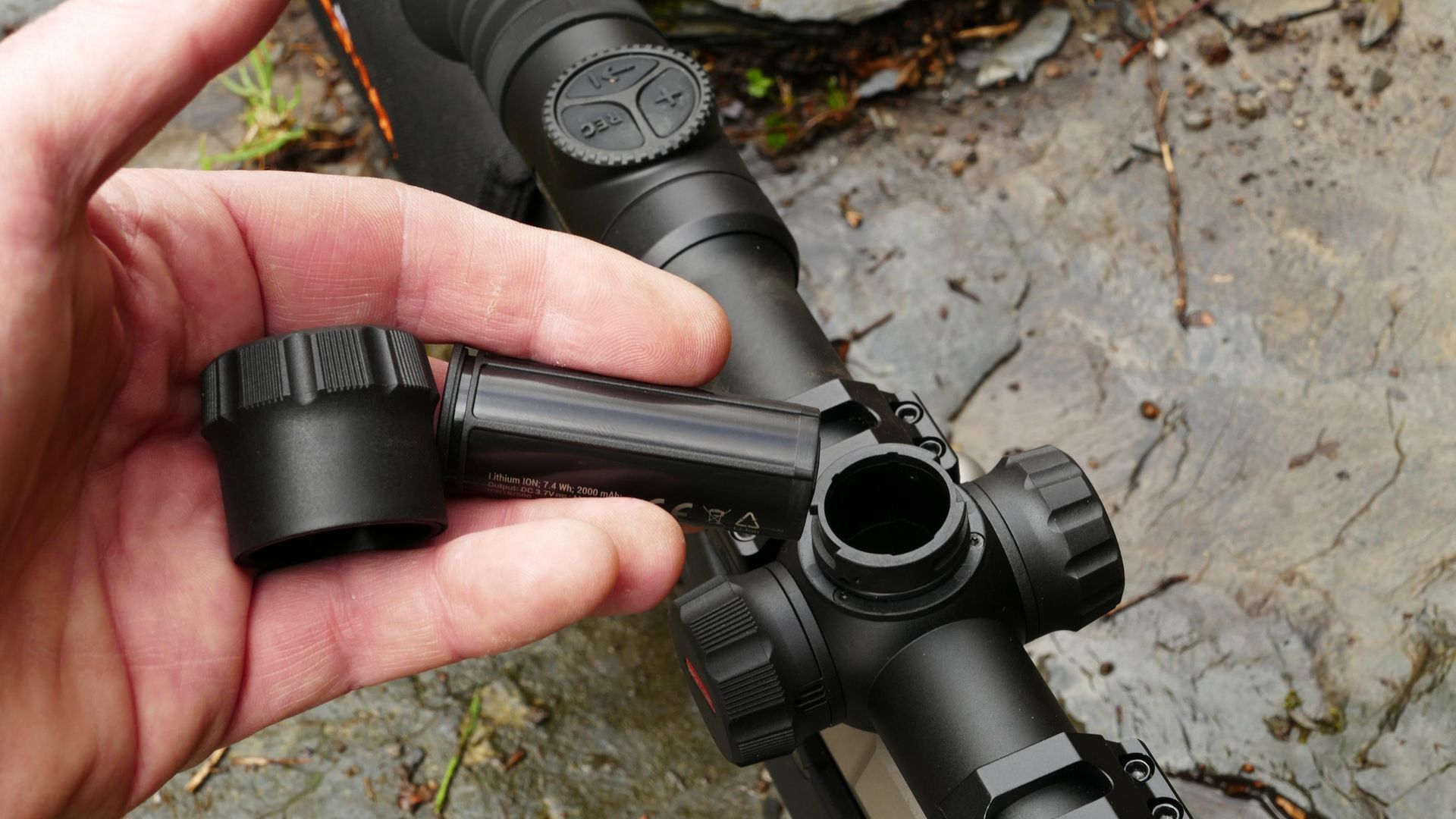Paul Austin takes an exclusive first look at the latest LRF-equipped thermal from Pulsar - the Thermion 2 LRF XP50 Pro
 credit: Archant
credit: Archant
I first got my hands on the latest Thermion at the British Shooting Show courtesy of Lee Adams, one of the nicest guys in the shooting game and a very familiar face on the Thomas Jacks stand. Lee handed over Pulsar’s latest creation with a wry smile, no doubt awaiting the inevitable question.
True to form the question was asked and the answer was given: “£5,000,” said the ever-smiling Mr Adams. I heard exactly what he said but it was kind of a double-take moment as I blurted out, “How much?” After a lot of puffing of cheeks, eyebrow-raising and maybe even the odd expletive, I grabbed the scope and starting tinkering and scanning the tweed- and camo-clad visitors milling around among the stands at the NEC.
It was only a brief encounter with the latest wallet-busting Pulsar, but even so it was pretty clear what I was dealing with. So I’ll cut to chase and kick this review off with the conclusion. Is the new Thermion with its built-in LRF the best thermal scope money can buy? Yes, it is. But you will have to fork over a truckload of cash to experience the pleasure of owning one. The real question is: Is it worth it? For the answer to that one, you’ll just have to keep reading.
 credit: Archant
credit: Archant
Tweaks and changes
The core thermal technology of the Thermion XP50 Pro remains the same as its predecessor. You get the best core image and the toughest build quality, materials, ergonomics and functionality. Add to that the superior user interface, navigation, wi-fi connectivity and app (Stream Vision 2) plus the most comprehensive image controls. Basically it’s an unrivalled combination of hardware and software. As I’ve often said before, with the Pulsars you get iPhone-esque user experience and functionality.
The base mag of 2.0x, which I really like, which stretches out to a rather optimistic 16x. It’s still shootable at that magnification but around 12x delivers the best combination of extended mag and retained image quality. Like its predecessor you have the option to toggle through the mag range, 2x, 4x, 8x, etc, but you can also dial in the mag manually with the left-hand side jog dial/turret.
Battery life is fine and enough for a couple of trips if you remember to put the scope in standby mode fairly regularly. Even so, a spare battery in a top pocket wouldn’t go amiss just in case, or during an extended trip.
The primary upgrade to the Thermion isn’t difficult to spot, with a rather sizeable LRF plonked on top of the objective. To accommodate its arrival there has been a sensible reshuffle in the button department, with the power/standby button migrating to the rear of the LRF and its place on the main circular control pad being taken up by the LRF controls.
The LRF offers an 800m range plus single-ping or scan mode with THD (true horizontal distance). It’s fast, accurate and a great addition to the existing Thermion 2 Pro’s skillset. The rear control pad now handles basic mag adjustment, video and pics plus the LRF, with a long press either toggling or further configuring each function. A long press on the mag button, for example, initiates the optional PIP function.
The combined jog dial and selection button on the left turret allows you to dig a little deeper into the controls. Once again, a short press accesses core functions such as brightness and contrast, while a longer press initiates the main menu for fine-tuning various functions. One-shot zero (with freeze frame), colour and brightness, ret styles, multiple rifle profiles… It’s all very sensibly done and all very Pulsar.
But all that said, the accompanying Stream Vision 2 app provides the most hassle-free method of configuring the entire scope. It handles file transfer and streaming as you’d expect, but it also allows you to tweak just about every function on the optic – rets, colour schemes, brightness and contrast, you name it – all without having to squint at the menus through the scope itself.
Up front the scope is dominated by the LRF, as it takes up most of the objective, therefore focus control has migrated to a pair of dials that are mirrored on either side of the LRF – great news for lefties like me!
The Pulsar Pro’s, with their <25mK NETD performance, 640 pixel sensor and fast f50/1.0 lenses, are frankly stunning. It doesn’t matter if it’s a thermal friendly day or one of those wet, drizzly, foggy mornings that just kill the contrast, the Thermion LRF is a joy to use. In great conditions it was amazing; on a poor day it was still impressive.

And finally...
In terms of image quality, connectivity and LRF performance I can’t fault the scope, but I was a bit disappointed there wasn’t a little more innovation along with the new hardware.
For this sort of money I was hoping for a ballistic calculator that would take the ranging information and incorporate it into a firing solution, automatically adjusting the reticle position accordingly, in the style of the X-Sight 4K Pro and ABL combo.
Auto-aiming is not to everyone’s taste, but if Pulsar intend to keep pushing the boundaries along with their prices (while also keeping iRay and HikMicro at arm’s length), they may need to do a little more with their tech to maintain market share.
So, the answer to the key question. Is the Thermion 2 LRF XP50 Pro worth the cost? Personally I couldn’t justify the expense, but if you have deeper pockets and are looking at hardware in this class there are no cheap alternatives.
The primary challenger is the iRay Rico RH50 and its bolt-on LRF, the Laser Rangefinder Extender, which when combined come in at £4,750, so not far short of the Pulsar. So the question becomes: Is the Pulsar worth the additional £250? In my opinion, yes. All day long. The thermal image is better, it has a lower NETD, superior software and enhanced fine tuning and connectivity. It’s a great scope but unfortunately way beyond the budget of most of us.
Tech specs
- Highly sensitive 640x480 pixel, 17 µm <25mK NETD thermal imaging sensor
- Built-in laser rangefinder with measuring range of 800 metres ± 1m
- Fast aperture lens F50/1.0
- Variable digital magnification from 2x – 16x
- High precision ambidextrous lens focusing
- High contrast 1024x768 HD AMOLED display
- Wide angle eyepiece
- 8 colour palettes
- Instant start-up from Display Off mode
- Up to 10 hours battery life on a single charge
- Picture in Picture (PiP) mode
- Built-in video and still image recorder
- Stream Vision 2 compatible
- Built-in WiFi module
- High calibre recoil resistant (9.3x64, .30-06, .300, .375H&H, etc.
- 5 zeroing profiles
- 10 electronic reticle configurations in 9 colour modes (inc. 3 scalable reticles)
- Operating temperatures from -25 to +50 °C
- IPX7 waterproof
Supplier: Thomas Jacks
Web: www.thomasjacks.co.uk
Price: £4,979.95